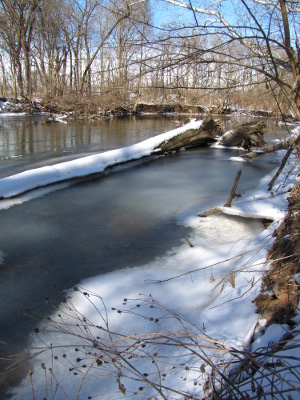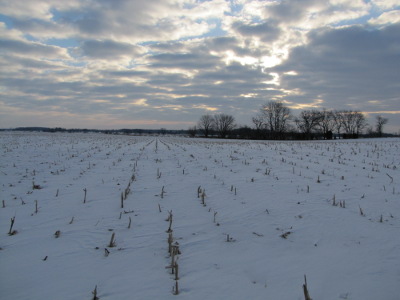
Frost-free dates
 I've
always been confused by frost
free dates,
especially after asking two local extension agents for information and
getting two very different answers. So I was thrilled to stumble
upon a tool that gives me actual data
from local weather stations while also clearing up the mystery.
I've
always been confused by frost
free dates,
especially after asking two local extension agents for information and
getting two very different answers. So I was thrilled to stumble
upon a tool that gives me actual data
from local weather stations while also clearing up the mystery.
Frost free dates are
like flood zones. If you live in a wet region like ours, you'll
want to head to the local authorities to find a map showing 10 year and
100 year flood zones. The idea is that, on average, waters will
reach the 10 year flood line once every decade and the 100 year flood
line once per century. Of course, this is a statistical tool, not
a forecast, so you might get a 100 year flood three years running, or
might not get one for 300 years. But either way, you won't want
to build your house in the 10 year flood zone, and probably shouldn't
put it in the 100 year flood zone either.
 Similarly, frost free dates
are reported based on the percentage likelihood of seeing frost on a
certain day in the spring. Using data from our closest weather
station, we have a 10% chance of seeing frost as late as May 16,
compared to a 90% chance of seeing frost on April 12. On average,
our last frost falls on April 29. So, in a way, those extension
agents were both right. One was being careful and giving me the
date after which frost will nearly never occur while the other was more
of a gambler and figured we could plant on the average last frost date.
Similarly, frost free dates
are reported based on the percentage likelihood of seeing frost on a
certain day in the spring. Using data from our closest weather
station, we have a 10% chance of seeing frost as late as May 16,
compared to a 90% chance of seeing frost on April 12. On average,
our last frost falls on April 29. So, in a way, those extension
agents were both right. One was being careful and giving me the
date after which frost will nearly never occur while the other was more
of a gambler and figured we could plant on the average last frost date.
 The Dave's Garden tool also
tells me the chances of seeing 28
degree frosts (which will nip our peach blossoms) and 24 degree
frosts (which will kill unprotected broccoli.) If I hadn't decided
to change over to using
soil temperature as my method of choosing planting dates, I can tell this tool would
be worth its weight in gold.
The Dave's Garden tool also
tells me the chances of seeing 28
degree frosts (which will nip our peach blossoms) and 24 degree
frosts (which will kill unprotected broccoli.) If I hadn't decided
to change over to using
soil temperature as my method of choosing planting dates, I can tell this tool would
be worth its weight in gold.
(In case you're curious,
the photos in this post are from our trip to Ohio, where there's still
lots of snow on the ground. You can see my review
of Mound City over
on our travel blog.)
Want more in-depth information? Browse through our books.
Or explore more posts by date or by subject.
About us: Anna Hess and Mark Hamilton spent over a decade living self-sufficiently in the mountains of Virginia before moving north to start over from scratch in the foothills of Ohio. They've experimented with permaculture, no-till gardening, trailersteading, home-based microbusinesses and much more, writing about their adventures in both blogs and books.
Want to be notified when new comments are posted on this page? Click on the RSS button after you add a comment to subscribe to the comment feed, or simply check the box beside "email replies to me" while writing your comment.

Well, actually, according to wikipedia "A 100-year flood has approximately a 63.4% chance of occurring in any 100-year period, not a 100 percent chance of occurring." Not quite sure why that is.... But my point is that in both cases, these are probabilities, and you have to choose what your cutoff point is when dealing with probability.
(Not sure if I'm making sense. I'm fighting off a cold today and my head's a bit fuzzy...)